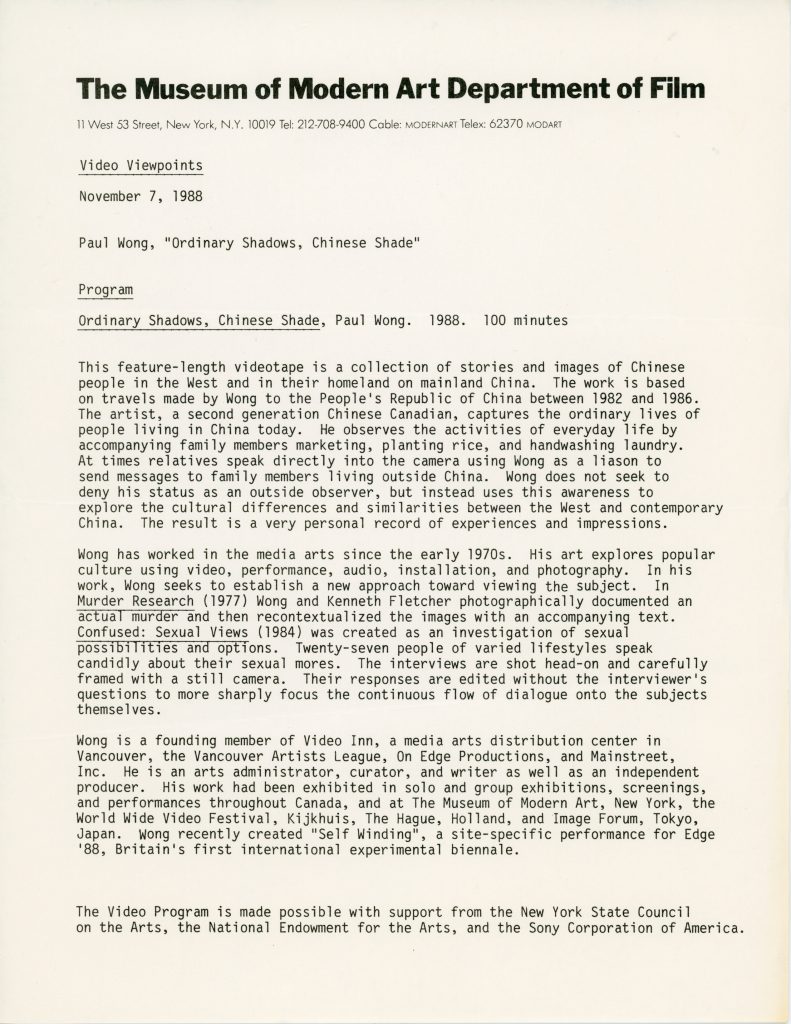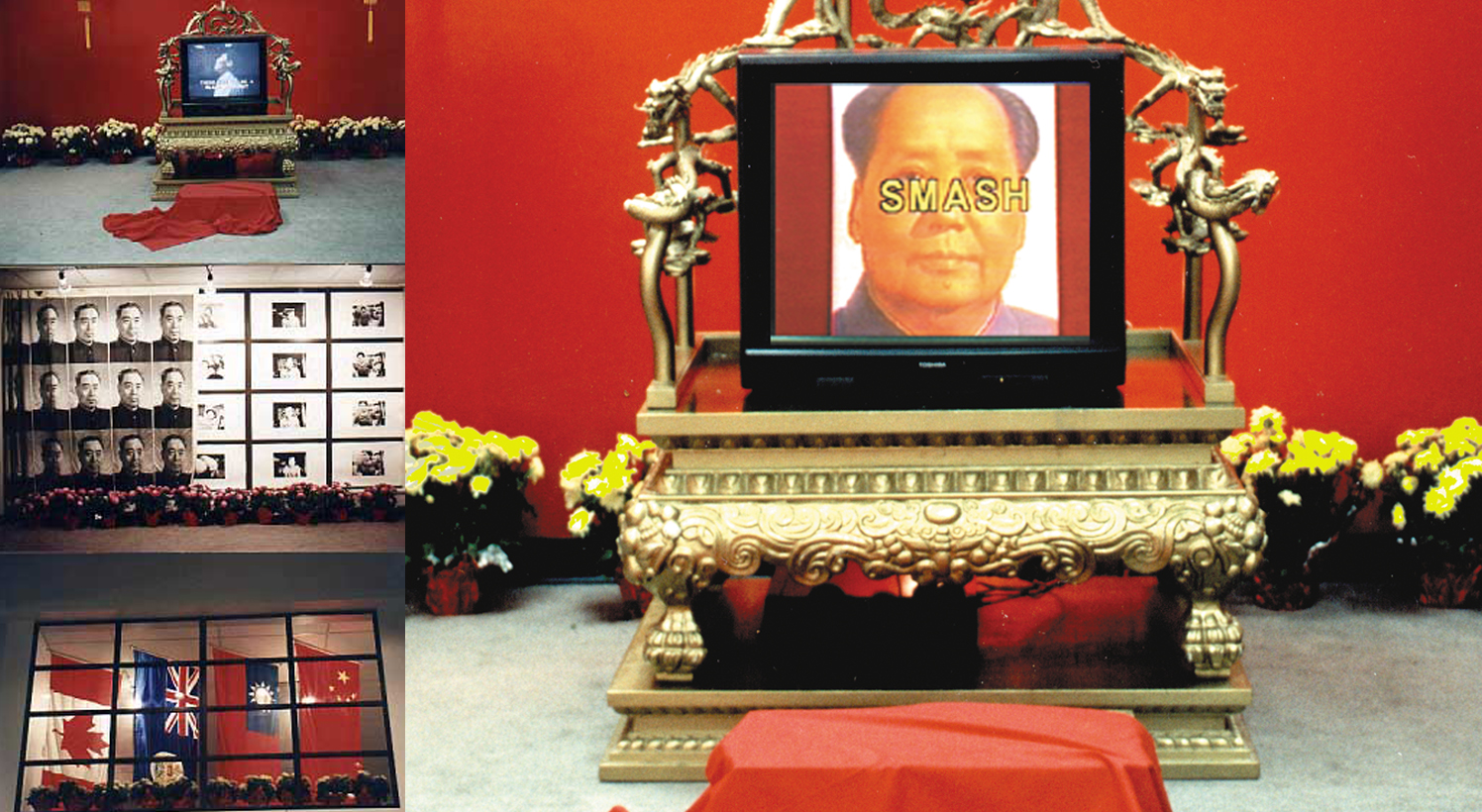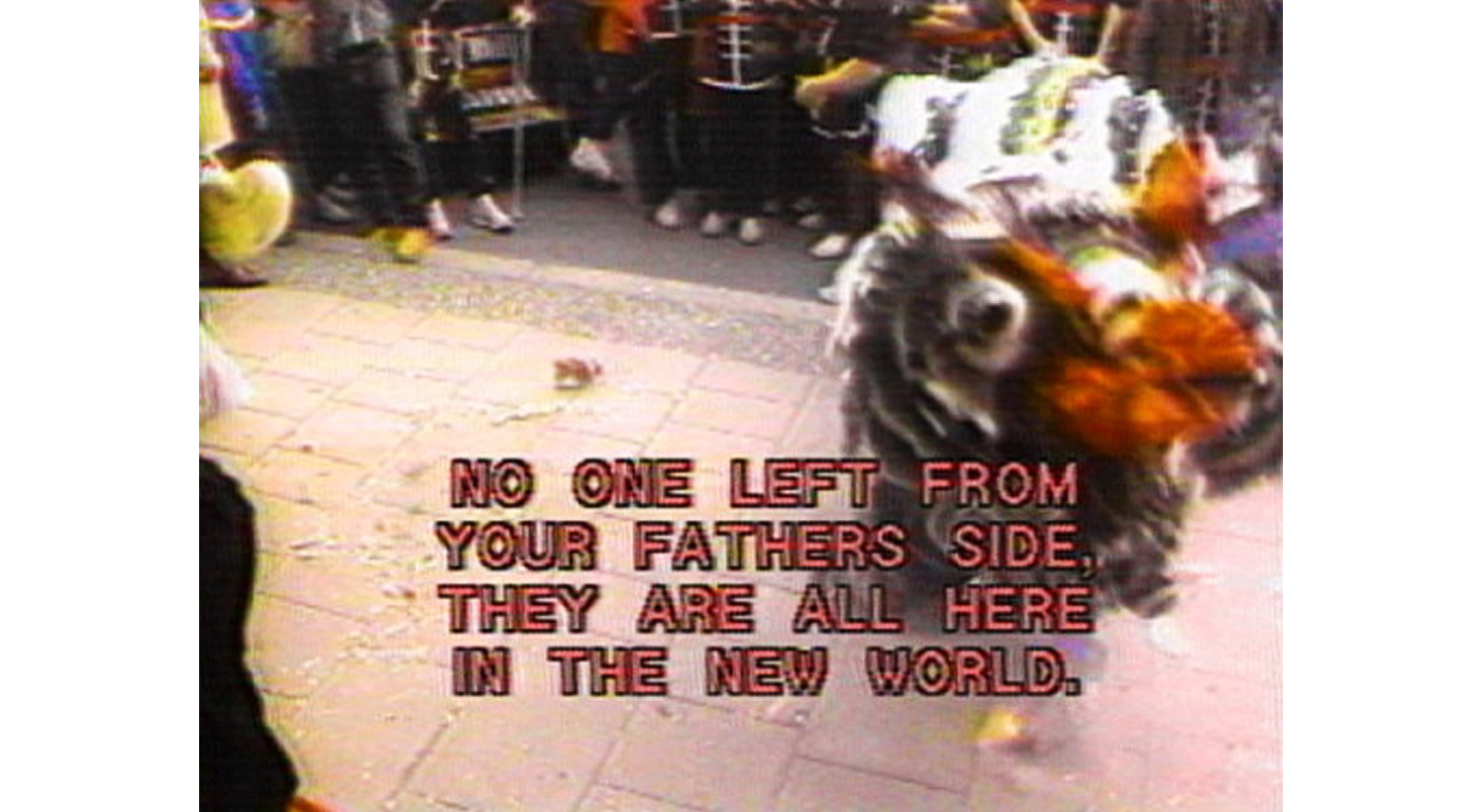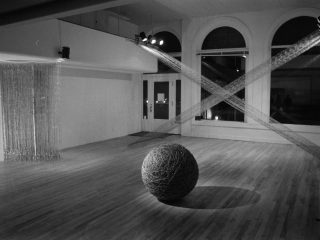ORDINARY SHADOWS, CHINESE SHADE
Ordinary Shadows, Chinese Shade
Paul Wong, 1988
89 minutes, colour, in Chinese with English subtitles
Wong uses his second generation Chinese-Canadian perspective to frame the Chinese here in the new world, Canada, and in the motherland, China. This is an intimate, personal view. Through his own “family network” and several trips to the People’s Republic of China, the artist gained access to the everyday, non-exotic world of the Chinese. A picture emerges of displaced cultures and traditions in transitions.
-Adapted from Jeanette Reinhardt, ed., Video Out Distribution Catalogue, Vancouver: Satellite Video Exchange Society, 1990, p. 32
Born in Canada, Paul Wong always wanted to see China, his family’s homeland, but permission to visit the People’s Republic of China was difficult. He made his first trip there with his mother in 1982. “Back then there was only big, low-quality VHS camcorders or huge professional television cameras,” Wong explains (email interview, July 12, 2005). “At that time China did not permit filming without permission, professional cameras were not allowed into the country. Not wanting problems I went armed with a variety of consumer recording devices: two 35 mm Nikons, Polaroid, Super 8 with sound, audio cassettes. Not unlike all the different forms, my approach was equally scattered, I was a mess in culture shock. I went with stereotyped expectations, once I could not find these, I was unable to see what was in front of me. I came back shattered with fragmented documents. (These fragmented documents are now probably really interesting). The slides and Polaroids are good. I have only seen the Super 8 films once. It is because of that first trip that I went back for four months in 1986. Instead of rushing about, I sat back and watched the world around me and recorded over forty hours of hi-8 video. From that came Ordinary Shadows.”
Very different in both form and content from his earlier work, Ordinary Shadows is a lyrical document of Wong’s second visit to China. The video begins with New Year’s festivities and a farewell banquet in Vancouver. Conversations with relatives reveal how some made their way to Canada. “Oh, all Orientals look the same. He came to Canada using false papers,” as one partygoer comments. There’s plenty of history woven in here, Japan and World War II, and the family stories continue when Wong reaches China. We arrive at Pearl River, then Thai Huunt, and we meet relatives who greet the artist and his mother: “Welcome back to Fong Gong. … The old house is this way.”
Even without knowing these people, one is profoundly moved by their stories. By “walking the mountain,” honour is done to the ancestors with gifts and feasting at their graves. “They killed him in 1966 during the Cultural Revolution,” we hear, and elsewhere, “My brother’s grave was found only last year.” Briefly we enter history with Wong and his mother, seeing both old and new ways, each with their place. Born of a desire for making real what had only been stories, family and friends known only by hearsay, Ordinary Shadows, Chinese Shade is a quest for identity, a document establishing history, a winding narrative of discovery and affirmation.
Collection of the National Gallery of Canada and Museum of Modern Art.
Distributor: Vtape, Video Out





